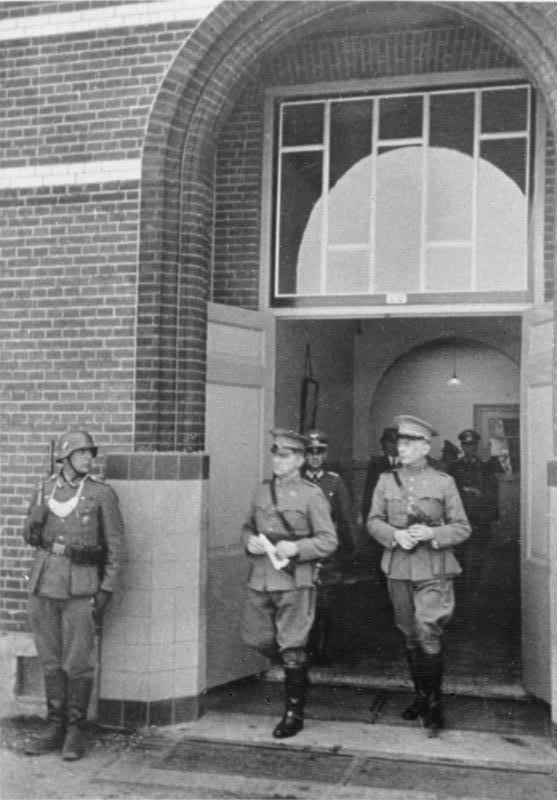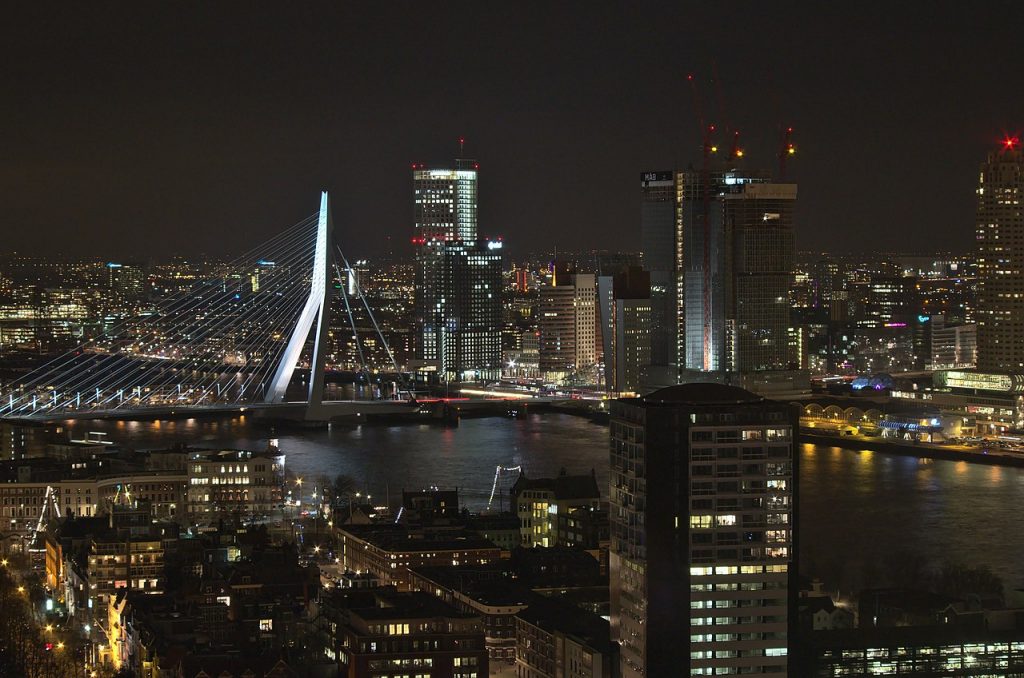The Dutch Resistance in World War II – Part 2: Rotterdam Posted by Sten on May 4, 2019 in Culture, Dutch Vocabulary
In anticipation of the dodenherdenking and the celebration of the bevrijding of the Netherlands from the German occupation during World War II on May 4 and 5 and the fact that 2019 marks 80 years since the start of World War II in 1939, I am writing a series on how the Dutch got sucked into the war, and how they fought and resisted the Nazi occupation. In this second part, we will explore how the war started continued and ended for the Dutch, with what happened in Rotterdam.
Other posts in the series:
The Dutch Resistance in World War II – Part 4: De Engelandvaarders
We left off with the aftermath of the Slag van Mill (Battle of Mill), which continued close to the border of the heart of the Netherlands, at the Randstad. The Germans broke through there quite quickly, too. Or were they already there? While the Nazis moved the trains across the grens (border), they also sent vliegtuigen (airplanes) deeper into the country.
Parachutisten
https://www.youtube.com/watch?v=MpmVHIsv5UQ
See Anton Greven’s account here.
“‘s morgens vroeg om een uur of 5 kwamen de vliegtuigen, en we wisten niet wat er aan de hand was. Ze kwamen vlak over de lakens zetten, en m’n vader zei, het zijn de moffen die binnenkomen. Ik was toen 14 jaar, en ik weet nog wel dat ik toen ontzettend bang was. Heel erg bang. Ik ben in mijn hele leven nog nooit zo bang geweest als toen.”
Anton Greven
(Early in the morning around 5, the airplanes came, and we had no idea what was going on. They flew over low, and my dad said it’s the Germans invading. I was 14 at the time, and I remember that I was very scared then. Very, very scared. I have never been as scared in my life as back then.)
On the first day, May 10, the Germans sent vliegtuigen with parachutisten (paratroopers), or Fallschirmjäger in German, into the West of the Netherlands. Anton Greven recalls how the Germans arrived early in the morning in Rotterdam-Zuid (Rotterdam South), where he lived as a boy. He explains how the Germans were best aardig (quite nice), and that it was only the second time for the young Germans to jump. The Dutch military was also still walking around in the first hours, nothing had happened. They were then taken, but the Germans remained peaceful, it seemed.
But then, everything changed.
The Dutch defended better than expected, with multiple days of fierce fighting all over the country. The invasie (invasion) did not go fast enough for the Nazis. To force a breakthrough, they devised a horrific plan. On the morning of May 14, 1940 at 10:00, the Dutch received an ultimatum of 2 hours to capitulate. If the 2 hours passed, Rotterdam would be bombed. When the Dutch entered capitulation negotiations, the planned bombardement (bombing) of 1 pm was cancelled, but the order did not reach all the bommenwerpers (bombers) in time – and so on May 14, at 1:30 pm, the Nazis dropped 97,000 kg of bombs on the old city of Rotterdam. Within a short 15 minutes, the bombardement was over. But these short 15 minutes had awful gevolgen (consequences). Thousands of buildings were vernietigd (destroyed), more than 800 people were gedood (killed) and more than 80,000 people ended up dakloos (homeless).
When the Nazis threatened that the city of Utrecht would undergo a similar fate, the Dutch capitulated. The overgave (capitulation) was signed the next day. And so on May 15, 1940, after only 5 days of fighting, the Netherlands became Nazi territory.
But not everybody wanted to give up that easily. Some people took great risks to fight back… Which is the story for the next post in the series.
Rotterdam Today
Rotterdam is one of the only large Dutch cities without a historical inner city.
If you want to see some of the remains of the old city of Rotterdam, check out this website. Another great article shows the differences between old Rotterdam and new Rotterdam, and you can look at before-and-after pictures of different spots in the city. While there are some monumental buildings left, like the Witte Huis (white house), seen as one of the first wolkenkrabbers (skyscrapers) of Europe) that survived the war, most are gone. The reaction was to make Rotterdam an modern and futuristic business city, with the implementation of American ideas like a Central Business District – a place for work places, not homes.

Build vocabulary, practice pronunciation, and more with Transparent Language Online. Available anytime, anywhere, on any device.






